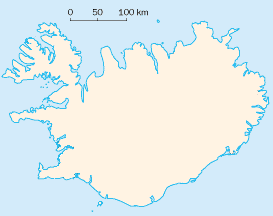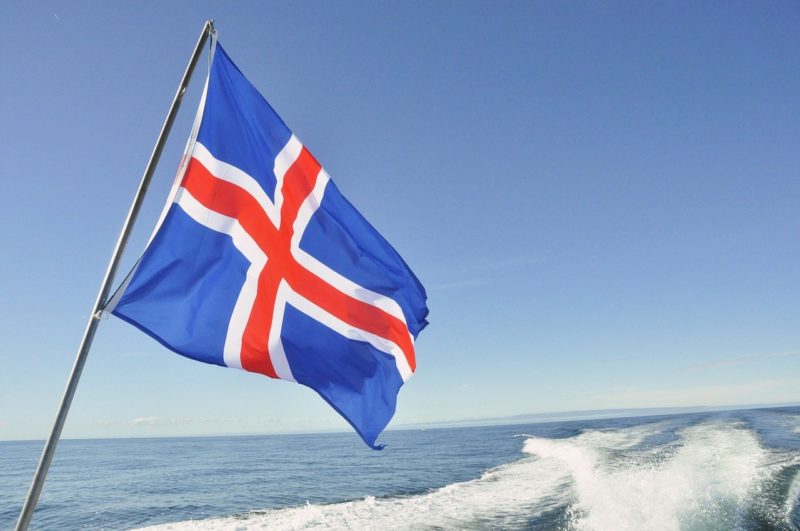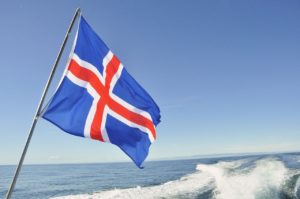Discover Secrets of the Icelandic Language
Iceland is an incredibly unique and remote country. And its language certainly has the same uniqueness to it. Its history, grammar, and current use may surprise you. So, to help you learn more about the Icelandic language, here is every basic fact and figure. Who knows, maybe this will be your motivation to start learning Icelandic.
Basic Facts About Icelandic
Icelandic is the official language of Iceland, and there are around 350.000 people who speak it. This means that Icelandic is a relatively small language, despite Iceland’s cultural relevance.
Icelandic is a North Germanic language. This means that it’s in the same language family as Danish, Swedish, Norwegian, and Faroese. But, unlike its Scandinavian relatives, Icelandic went through a very separate evolution throughout its history.

The History of the Icelandic Language
On the European continent, Proto-Germanic branched into the Northern dialect in 2nd century CE. This was the ancestor of Old Norse, which in turn is where Icelandic originated. But, the language of Iceland isn’t that easy to summarize.
Before Vikings claimed Icelandic territory, there were already Gaelic settlers on the island. But, the recorded history of Iceland only truly starts with the arrival of the Vikings in the 9th century CE. This is when Old Norse was introduced, and it has remained in Iceland ever since.
And since the discovery of America, Iceland has been a key point in trading routes. So, English, French, Dutch, and German were all spoken by some people on the island. But, curiously, Icelandic remained relatively the same.
In fact, Icelandic hasn’t really changed since medieval times. Despite centuries of contact with other languages, the Icelandic language remained the same. It’s actually still a dialect of Old Norse. And that’s not a coincidence.

The Icelandic Language Purity Movement
Since the 18th century, Iceland began a nationalistic movement. The goal was to expel every foreign influence from the language. This was a conscious choice to eradicate all loanwords from the Icelandic language. This eradication could be done in two ways:
- Look back to Old Norse: Icelandic people looked back at their language history and reversed the loanword changes that influenced the evolution of the language.
- Invent new Icelandic words: Where wasn’t any Old Norse equivalent, Icelandic people made up new, more Icelandic sounding names for words with a foreign origin.
The purification of Icelandic is a movement that’s still somewhat relevant today. Although new English words have entered the vocabulary, there’s still a conscious effort to keep Icelandic as “clean” as possible. This lack of foreign influence on the language means that it’s closer to Old Norse than any of its Nordic relatives. And it also makes it a little harder to learn thanks to a lack of cognates, and completely foreign vocabulary. Even for English native speakers.
Icelandic Alphabet and Writing System
The Icelandic writing system uses Latin letters. This means that the Icelandic alphabet has almost the same letters as the English alphabet. Almost. There are a few extra letters in the Icelandic alphabet to account for the differences in pronunciation. But, native English speakers definitely have a head start when they’re learning Icelandic.
The Icelandic alphabet has 32 letters.
A a |
Á á |
B b |
D d |
Ð ð |
E e |
É é |
F f |
G g |
H h |
I i |
Í í |
J j |
K k |
L l |
M m |
N n |
O o |
Ó ó |
P p |
R r |
S s |
T t |
U u |
Ú ú |
V v |
X x |
Y y |
Ý ý |
Þ þ |
Æ æ |
Ö ö |
You may have noticed that C, Q, W, and Z aren’t a part of the Icelandic alphabet. That’s because no Icelandic word actually uses these letters anymore. Instead, these sounds are replaced with the following letter combinations in Icelandic:
- c = k / s / ts
- q = hv
- w = v
- z = s
Although it’s worth mentioning that these letters do appear on the Icelandic keyboard. They were part of the Icelandic alphabet until the 1980’s, but since then they have become obsolete from everyday use. But, of course, they’re still needed to write foreign words and names of foreign origin.
The Special Letters of the Icelandic Language
Without a doubt, the most unique aspect of the Icelandic language comes down to these ten letters: Á, Ð, É, Í, Ó, Ú, Ý, Þ, Æ, and Ö. These accents and special characters signify a sound or pronunciation difference that the normal Latin alphabet doesn’t portray accurately.
Special Icelandic Character |
How to Pronounce It |
Example |
Á |
like ow in cow |
blár – blue |
Ð |
the th in this |
rauður – red |
É |
like ye in yeah |
rétt – correct |
Í |
like e in get |
ís – ice |
Ó |
long o |
fólk – people |
Ú |
oo in book |
hús – house |
Ý |
like we |
kýr – cow |
Þ |
the th in thing |
þunnur – thin |
Æ |
like eye |
grænmeti – vegetables |
Ö |
like e in get |
mjög – very |
Speaking the Icelandic Language
One of the most crucial parts of learning Icelandic is perfecting your pronunciation. With this many new sounds and letters, that’s difficult to imagine at first. But, Icelandic is just like a language. If you break it down and practice, you can master the proper Icelandic pronunciation.
Short and long vowels are very important in Icelandic. Long vowels add stress to the syllable. They usually appear before consonant clusters (pr, tr, kr, sr, pj, tj, sj, tv or kv), before a single consonant, and in one-syllable words. Everywhere else, vowels are short and unstressed.
Icelandic Numbers
Whenever you doubt the relation between English and Icelandic, just look at the numbers in Icelandic between 1 and 10. Although they’re not exactly the same, the base and the sound of the words are undeniably close.
1 |
2 |
3 |
4 |
5 |
6 |
7 |
8 |
9 |
10 |
einn |
tveir |
þrír |
fjórir |
fimm |
sex |
sjö |
átta |
níu |
tíu |
Icelandic Grammar
A lot of Icelandic learners are hesitant to start their studies because they fear grammar. It certainly has a beast-like reputation. But, it’s actually quite manageable. You can conquer Icelandic grammar by breaking it down to its components. And since the roots of Icelandic started from the same language as English, there’s a chance you may find some of the rules familiar.
Does Icelandic Have Genders?
The Icelandic language has three genders: masculine, feminine, and neuter. Although this concept is foreign for native English speakers, a lot of languages, and especially Germanic languages have this characteristic.
Gender in Icelandic influences more than just the noun. It matters because the articles, adjectives, and pronouns need to match the gender too.
Icelandic Cases
Cases signal what function a word fulfills in a sentence. For example, a noun can easily be the subject of the sentence:
- Helga pets the horse. – Helga gæludýr hestinum.
Here, “Helga” is the one who does the action, so she’s the subject. But, “Helga” can also become the direct or indirect object:
- The horse follows Helga. – Hesturinn fylgir Helgu.
In Icelandic cases help identify what role a word has in the sentence. This language does this with inflections. The word undergoes minor changes to reflect the case. There are 4 cases in Icelandic:
- nominative: when the word is the subject
- accusative: when the word is the direct object
- dative: when the word is the indirect object
- genitive: when the word is possessive
This effects nouns, adjectives, and pronouns in Icelandic. When you decline a word, you need to pay attention to its case, gender, and number.

Icelandic Articles
Unlike English, Icelandic doesn’t have indefinite articles (a/an). But, they do have definite articles (the). Although, the grammatical concept isn’t the same. Instead of having the definite article as a separate word, Icelandic attaches a definiteness suffix to the end of the noun.
This table below shows two possibilities. You can see the possible endings on the left side for words divided by gender and number when there’s no article. And the right side shows how these endings change when you make the noun definite.
No article |
Definite article |
||||||||||
masculine |
feminine |
neuter |
masculine |
feminine |
neuter |
||||||
sg. |
pl. |
sg. |
pl. |
sg. |
pl. |
sg. |
pl. |
sg. |
pl. |
sg. |
pl. |
|
-ur |
-ar | – | -ir | – | – | -urinn | -arnir | -in | -irnar | -ið | -in |
|
-i |
-inn |
||||||||||
| -ll | -a | -ur | -llinn | -an |
-urnar |
||||||
|
-nn |
-nninn |
||||||||||
For example, this is how the words would change when you make them definite in Icelandic:
- man – the man = maður – maðurinn
- woman – the woman = kona – konan
- child – the child = barn – barnið
Verbs in the Icelandic Language
The verb is the word that signals the action. While in English, there is a relatively low number of conjugations, in Icelandic, verbs go through a longer conjugation process. There are several factors you need to take into account when you’re conjugating verbs in Icelandic. Here’s a list of what you need to keep in mind, and what option you have in each category. When you’re conjugating verbs, you need to pay attention to:
- Tense: past, present, or future with auxiliary verbs
- Mood: indicative, imperative, conditional, or subjunctive
- Person: 1st, 2nd, or 3rd
- Number: singular or plural
- Voice: active, passive, or medial
Most verbs in their infinitive for end in -a or -á in Icelandic. Here’s a quick example of a verb conjugation in the present tense.
borða – to eat
English |
Icelandic |
I eat
you eat he eats she eats we eat youl eat they eat |
ég borða
þú borðar hann borðar hún borðar við borðum Þið borðið þau borða |
Iceland’s Literary Culture
When you live on a far-away island, what do you do in your free time? Read of course. Icelanders are avid readers, and there’s a booming publishing industry in the country. This tradition goes back to Old Norse roots.
The Icelandic Edda is a defining work in global literary history. It contains the stories of Old Norse and Germanic mythologies. The legends of Thor, Odin, and Loki. There’s also the Poetic Edda, which is the origin of these tales. With such major Icelandic literary heritage, it’s no wonder that Icelandic people love to read.
Is Icelandic a Hard Language to Learn?
Icelandic is a very isolated and unique language. Its vocabulary is one-of-a-kind, even within the Nordic language family. And its grammar doesn’t make the language any more appealing either. These are the main reasons why Icelandic has a reputation for being a hard language to learn.
But, that’s simply not true. Learning a language isn’t hard if you have the right resources. Plus, there are many more reasons why Icelandic isn’t as hard as you think out there. So, don’t brush this beautiful language aside because you fear that it’ll be hard to learn.
According to the US Foreign Service Institute (FSI), Icelandic is a category 4 language. This means that it’s harder than French, Spanish, or other Nordic languages to native English speakers. But, it’s definitely easier than Chinese, Japanese, or Arabic. According to FSI calculations, English speakers need 1100 hours of study to reach fluency in Icelandic on average. But, let me say again, you need the right resources to learn a language. And if you have the most reliable Icelandic course, you’ll surely reach fluency much faster than some government estimate.
Is Learning Icelandic Worth It?
Yes. Speaking Icelandic fluently will improve your life. For one, being bilingual has career, travel, and mental health benefits. Having a second language on your CV can get you more job opportunities. It can also earn you a higher paycheck.
If you ever travel to Iceland (and you should, it’s spectacular), speaking even a few words in Icelandic can get you out of sticky situations. If you’re ever lost, you can ask for directions. You receive better customer service. And most importantly, you can ask for travel recommendations from locals. They know the hidden spots best, and they can let you in on their secret because you took the time to learn their language.
And that’s not all that comes with speaking a second language. Bilingualism has been linked to improved chances against dementia and Alzheimer’s at old age. Plus, putting the effort and achieving such a great feat can also boost your mental health.

But, there are some benefits that are only true for Icelandic. Such as reading Icelandic literature, learning about Viking culture, and discovering other Nordic languages. Whatever your main motivation to learn Icelandic is, I promise you, it will be worth it.
Learn Icelandic With the Best App
Of course, you need a reliable way to learn Icelandic. You need a course that gets you speaking Icelandic fluently and comfortably in as little time as possible. Well, what if I told you that this program exists, and its name is OptiLingo?
OptiLingo is an app designed with speaking in mind. It teaches you how to pronounce the most common Icelandic words and phrases. That’s the same vocabulary everyday Icelandic locals use. Achieve Icelandic success easily with OptiLingo!









